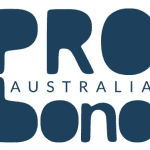Three Charts On: Job Prospects for Refugees in Australia

6 November 2017 at 8:34 am
The Building a New Life in Australia study shines a light on what jobs refugees can get, says Pilar Rioseco and John De Maio from the Australian Institute of Family Studies in this article first published in The Conversation.
While refugees will always face major challenges in making the transition to employment, new research indicates their job prospects improve the longer they are in Australia.
But for those who do find work, it’s not always in their chosen profession. Most are in low-skilled occupations.
The Building a New Life in Australia study is longitudinal, following the journey of almost 2,400 humanitarian migrants, including refugees and asylum seekers, from their arrival in Australia or when granted a permanent visa. The participants come from 35 countries and speak close to 50 languages.
Some 89 per cent have experienced significant trauma such as war and persecution. Most have arrived in Australia with little or no English, and many had their schooling interrupted.
The challenge of finding work
At the first interview for the study (three to six months after arrival for most), 6 per cent of participants aged 18-64 were in paid employment. This had risen to 16 per cent around one year later (during wave 2) and 23 per cent two years later (wave 3). This is a four-fold increase between the first and third interviews.
Employment rates for men were higher than for women, with 36 per cent of men in paid work at wave three compared to 8 per cent of women. Many women take on family and caring obligations in the early years of settlement, which partly explains their lower rates of employment.
We found searching for a job can be challenging and time-consuming for many humanitarian migrants.
Most participants had been in Australia for only a few months at the first interview. Over 80 per cent of those job seekers found it hard to get a job. Consistent with previous research, humanitarian migrants’ employment is expected to gradually increase as they spend more time in Australia.
Importantly, humanitarian migrants in Australia seem to be entrepreneurs, showing higher-than-average engagement in small and medium-sized business.
One of the most challenging factors associated with employment is English proficiency. Not surprisingly, participants with good understanding of spoken English were much more likely to be employed.
However, there are other barriers to employment. These include lack of Australian experience and ongoing discrimination against certain ethnic groups in the labour market. For example, research has shown that African and Middle Eastern refugees had poorer employment outcomes than ex-Yugoslavs despite having similar levels of knowledge, skills and qualifications.
So educating employers on the skills of humanitarian migrants may be worthwhile.
What jobs can refugees get?
Even though more humanitarian migrants are finding jobs, certain areas remain a challenge. Our analysis shows some evidence of what is known as “occupational skidding”.
That is when humanitarian migrants cannot obtain jobs in line with their skills and qualifications. Think of the stereotypical surgeon who ends up working as a taxi driver in their new country.
The following chart shows a decline in the proportion of 18 to 64-year-olds working as managers and professionals, after arriving in Australia.
As you can see from the data, the most common occupations among humanitarian migrants were labouring (37 per cent at wave 1, 36 per cent at wave 2, and 42 per cent at wave 3) followed by technicians/trades (29 per cent, 26 per cent and 22 per cent).
This contrasts starkly with pre-migration occupations, where sizeable percentages were working in professional occupations (21 per cent) and technicians/trades were most common (28 per cent). Examples of professional occupations include engineers, teachers, doctors and lawyers.
There were almost as many managers as there were labourers prior to migration (11 per cent and 16 per cent). By the time of the third interview, no participants reported working in managerial positions.
Previous Australian research shows there are niches (cleaning, aged care, meat processing, taxi driving, security and building) where humanitarian migrants tend to find employment and that the process for recognising skills can be difficult in Australia.
Employment prospects improve over time
The longer humanitarian migrants spend in Australia, the more likely they are to find employment. Despite some improvements, many still struggle to obtain work in Australia commensurate with their previous skills and qualifications. This is also a problem in other resettlement countries such as Canada and Sweden.
The Australian government is piloting the Careers Pathways Pilot for Humanitarian Entrants and has recently launched a new Humanitarian Settlement Program.
We expect these programs will improve outcomes as employment helps to create new social and professional networks, improve English skills and can lead to financial independence.
About the authors: Pilar Rioseco is a senior research officer at the Australian Institute of Family Studies and John De Maio is a research fellow at the Australian Institute of Family Studies.
This article was originally published on The Conversation.







